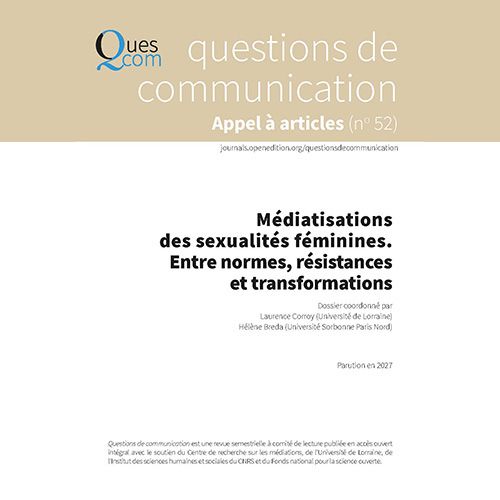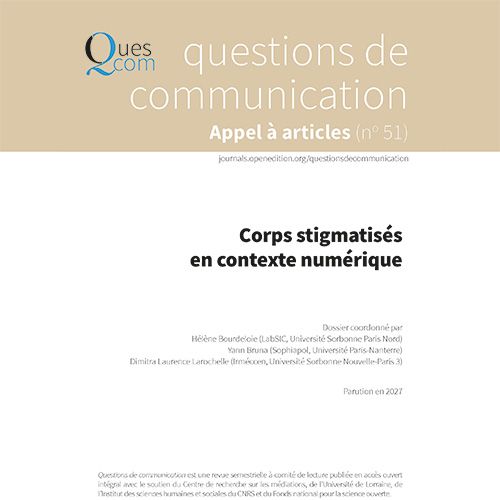Inmedia "Fans: Engagement, Participation, Agency"

Inmedia "Fans: Engagement, Participation, Agency"
Laurence Corroy and Mélanie Bourdaa
In English speaking countries, research on active audiences and fans has been flourishing since the late 1990s. Reception of television messages and contents for fans is not limited to the very moment the show is broadcast on TV; it goes beyond this thanks to several activities that fans express and practice within a virtual community: writing fan-fictions and cultural reviews, creating fan-arts, videos, websites, finding other fans to talk to and share their passion with (Bielby, Harrington, & Bielby, 1999; Jenkins, 2006). Fans belong usually to a virtual community in which the same passion, the same language, the same media practices and the same will to participate are expressed. This sense of belonging is extremely strong among fans (Costello, 2007). This is what the Internet has brought to fans: a virtual place where they can meet up rapidly and easily with no time or space problems. The Internet provides immediacy, even a sense of urgency, for viewers who go online, creating something that is familiar – fandom. According to Henry Jenkins, fans are active receptors, who use new technologies to adapt to new socio-cultural environments to create and redefine a language, practices, identities and values. The cultural logic of the fans blurs the border between consumption and production, between writing and reading. Finally, virtual communities are places of social interactions where there is participation in a mediated environment.
Following Jenkins’s canonical works (1992; 2006), fandoms and fan activities are being discussed in the French academic world and more largely in the English-speaking world as active and creative audiences who use new technologies to perform activities and gather in a “community of practices” (Baym, 1999). In France, young scholars analyze fandoms from a specific activity, such as the creation of fan fictions (François, 2009) or offer a typology of fan activities (Bourdaa, 2014). They also envision fans as a virtual community empowered by their use of new technologies (Martin, 2010; Peyron, 2013). Other scholars study a particular object, TV shows, in order to understand a shift in the reception practices and highlight specific patterns in fan reception (Combes, 2010; Bourdaa, 2012).
Fans are valued because they are productive and active and this “productive turn” overshadows other less productive fans. Thus, if fans are analyzed for their abilities to create content, perform social and political actions, it appears that the definition of the term “fans” is still blurred and that as an audience they are never compared to other audiences. As Jonathan Gray argues (Gray, 2003), there is a lack of studies into non-fans and anti-fans in the audience and fan research and these audiences “involve different practices, different proximities from the text and thus, different textualities.”
This special issue questions the definition of fans and productive fans, and what fans do with cultural objects (movies, games, TV shows, novels, comic books). Research on young audiences shows a strong inclination towards serial universes and narratives (Corroy 2012; 2014) which needs to be further explored, especially regarding intermediality and affects. Furthermore, the success of sagas such as Twilight, Harry Potter, Pokemon, Tokyo Ghoul provide insight into seriality aimed at young audiences while including trans-generational aspects that stimulate enthusiasm and agency of more adult fans. This notion of seriality is the key concept we would like to investigate in this special issue, regarding the themes below.
Young audiences appreciate serial universes and can practice binge-watching with delight, which is greatly favored by streaming platforms such as Netflix. However, it would be wrong to conclude that this is only a generational practice. Fan engagement in the interpretation and reappropriation of fiction is all the more strong that the serial universe includes variations, complex characters and their development and multiple points of view as story arcs develop, while preserving a narrative continuity.
Articles could deal with but are not limited to the following:
Part 1 – Political engagement and fans
Hermione Granger 2020, the Harry Potter Alliance, the Dreamers movement, the Clexa and BYG Trope affair. These examples underline the ability for fans to reinvest figures from popular culture to carry out collaborative political projects and actions. These actions are part of what Jenkins and al. called “Civic Imagination” or what Andrew Slack coined “Cultural Acupuncture”, the use of fictional narratives and characters to motivate civic actions. How do fans organize themselves to perform these actions? How do these actions bring about social change? Under what circumstances can fans be agents of political change? How does time play out in the engagement of fans?
Part 2 – Materiality of object fandoms
Producers and broadcasters, of serial pieces in particular, develop websites and many products and devices that reinforce the attachment to recurring characters and heroes. The act of pretending induced by the materiality of the costumes, action figures and objects extend and animate the communities of fans. Between fiction and a breach into reality, the possession of objects, as well as the possibility of moving in three-dimensional spaces that recompose the favorite universes (Hogwarts College for Harry Potter, scenes from Game of thrones, lightsabers and costumes from Star Wars) offer a whole arsenal of affects, where all the senses are stimulated. Seriality here favors the engagement and immersion of fans in those fictions and franchises, and play an important part in triggering their will to possess objects and incarnate characters.
How do fans express the feelings that inhabit them in immersive experiences? Are they able to experience refined reflexivity regarding the materialities which seem to accompany their activities?
Part 3 – Relationship with the producers
Fans and producers have always had an ambiguous relationship. Today, social networks create new ways for producers and fans to connect. For example, producers tend to create an interaction with fans, inviting them to participate and create contents in order to promote their shows or movies. On the other hand, some producers such as J.K. Rowling or George R.R. Martin refuse the creativity of fans invoking IP law, especially regarding the writing of fan fictions. How do social media shape a new media environment? How does toxic fandom, that is heinous online discourses, change the dynamic between fans and producers? Is toxic fandom always linked to social issues such as homophobia, transphobia, racism, sexism?
Part 4 – Affects and feelings
The discovery of fictional characters’ intimacy, the access to their thoughts and feelings favor fans’ attachment and the setting up of “parasocial” relations (Derrick et al. 2008). They are characterized by emotional work that can lead to fan creativity. Fandoms are what Louisa Stein calls “feels culture”, a culture of affects and feelings. Indeed, fans engage emotionally and intellectually in narrative universes and storyworlds and this engagement triggers their creativity and attachment to the fiction. For example, the writing of fanfiction stems from both fascination and frustration from fans. In addition, fans describe their productions and creations as a “labor of love”, a work rooted in their love for media text (Stein, 2006). Fanfictions can thus appear as forms of active reappropriations that invade fans’ common experience. It is also a way to show fans’ skills regarding the codes of the pieces they love.
Indeed, fans produce content in their community from an act of reading and interpretation of the media text and / or characters. This work sets up a universe of common references for fans. How can these affects shape fandom identities? How can they build a collective? How can affects lead to fan productions?
The sentimental and romantic grammars at play, the evolution of the characters, especially for the youngest audiences, whose adventures take the form of initiation stories are offered to the audiences as so many echo chambers for their own identity and emotional development. How are these identity layouts expressed and recontextualized?
Submissions Guidelines
Each article should be 5,000-7,500 words long, excluding endnotes and bibliography. Texts should be typed using Times New Roman and double spaced. They should be submitted as .doc files.
The author’s name and contact details should appear on a separate title page preceding the text. A short biographical presentation should be provided, as well as an abstract of about 100 words, and five key words.
A list of references should be added at the end of the article.
The Journal follows The Chicago Manual of Style, fifteenth edition, “notes and bibliography” system: http://www.chicagomanualofstyle.org/tools_citationguide.html
Notes should be placed at the end of the article and double spaced (endnotes). Avoid excessive noting, combine notes when possible.
Schedule
Submission date: June 30th, 2021
Publication: December 15th, 2021
To submit an article please contact guest editors Mélanie Bourdaa and Laurence Corroy




